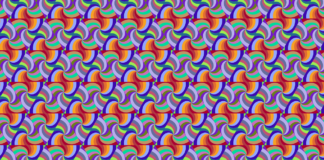Smart Fabrics: Weaving Technology into Textiles for a Connected Future
In a world where technology continues to shape and redefine our daily lives, even the fabrics we wear and interact with have undergone a revolutionary transformation. Enter the realm of smart fabrics – a convergence of traditional textiles and cutting-edge technology that has given rise to a new generation of materials with capabilities far beyond their conventional counterparts. Smart fabrics, often referred to as e-textiles or electronic textiles, are fabrics infused with advanced technologies that enable them to sense, react, and adapt to their surroundings. These fabrics seamlessly blend fashion with functionality, offering a glimpse into the future of interactive and adaptive clothing, as well as a wide array of applications across various industries.
Smart fabrics represent a profound shift in the way we perceive and utilize textiles. At their core, they integrate technology into the very fabric of our garments and accessories, opening up a world of possibilities that was once confined to the realms of science fiction. These fabrics combine the softness, comfort, and versatility of traditional textiles with the intelligence and interactivity of modern electronics. Whether it’s clothing that adjusts its temperature based on external conditions, bandages that monitor wound healing, or furniture that responds to our presence, smart fabrics have the potential to revolutionize industries ranging from fashion and healthcare to architecture and automotive.
The key to the functionality of smart fabrics lies in the integration of various components and technologies. Conductive threads and fibers, alongside miniature sensors, actuators, and even microprocessors, are woven or embedded into the fabric’s structure. This seamless fusion of technology and textile results in fabrics that can detect, process, and transmit data, all while maintaining their inherent textile qualities. The applications are manifold. Imagine a world where your running shoes can analyze your gait and provide real-time feedback, or where firefighters’ uniforms can monitor their vital signs in hazardous environments. The marriage of textiles and technology in smart fabrics heralds an era of unprecedented innovation and utility.
In recent years, significant advancements in materials science, nanotechnology, and electronics have propelled the development of smart fabrics. Researchers and engineers collaborate to find ingenious ways to integrate technology without compromising the fabric’s texture, flexibility, or washability. Conductive materials like silver-coated threads or conductive polymers are carefully integrated, allowing for the seamless flow of electric currents. Meanwhile, sensors, whether detecting temperature, motion, or biometric data, are strategically placed to maximize accuracy while remaining unobtrusive.
One of the most compelling aspects of smart fabrics is their versatility in catering to various sectors. In the realm of healthcare, for instance, these fabrics hold immense promise. Imagine clothing that not only monitors a patient’s vitals but also administers medication through transdermal patches. This could revolutionize patient care by providing continuous, non-invasive monitoring and personalized treatment delivery. Additionally, the fashion industry stands to be completely transformed. Beyond aesthetic considerations, clothing could incorporate customizable lighting, color-changing fabrics, and even augmented reality elements, offering consumers entirely new ways to express themselves.
As the smart fabric revolution gathers momentum, it brings to light the importance of addressing challenges such as power supply and durability. Integrating electronics into textiles requires a reliable and sustainable power source, often in the form of flexible batteries or energy-harvesting mechanisms. Moreover, ensuring that these fabrics can withstand the rigors of daily wear, including washing and stretching, is crucial for their widespread adoption. Researchers are tirelessly working to improve the longevity and robustness of these textiles, aiming to make them as commonplace as the fabrics we wear today.
In conclusion, smart fabrics represent a paradigm shift in textiles, marrying technology and tradition to create a new class of materials that transcend their original functions. From healthcare to fashion, sports to architecture, the applications of smart fabrics are limited only by our imagination. As we continue to weave technology into the very fabric of our lives, the future undoubtedly holds a tapestry woven with innovation, connectivity, and endless possibilities.
Sensing Capabilities:
Smart fabrics are equipped with sensors that can detect various environmental factors and physiological signals. These sensors enable the fabric to gather data such as temperature, humidity, pressure, motion, and even biometric information from the wearer. This data can be used for real-time monitoring, analysis, and feedback, enhancing user experiences across industries like healthcare, fitness, and sports.
Integration of Electronics:
These fabrics seamlessly integrate electronic components, such as conductive threads, fibers, and microelectronics, into their structure. This integration is achieved without compromising the fabric’s comfort, flexibility, or aesthetics. Conductive materials facilitate the flow of electrical currents, enabling communication between sensors, actuators, and processors embedded within the fabric.
Adaptability and Responsiveness:
Smart fabrics have the ability to respond and adapt to changing conditions. They can be designed to change color, alter patterns, or adjust their properties based on user preferences or environmental cues. For example, clothing made from smart fabrics could regulate temperature by changing thermal properties in response to external temperature changes or the wearer’s body heat.
Communication and Connectivity:
Enabled by embedded electronics, smart fabrics can transmit and receive data wirelessly. This connectivity allows for seamless communication between the fabric, other devices, and the cloud. Through wireless protocols like Bluetooth or Wi-Fi, these fabrics can relay information, receive commands, and synchronize with external devices, making them an integral part of the Internet of Things (IoT) ecosystem.
Versatility in Applications:
Smart fabrics find applications across a wide range of industries. In fashion, they enable clothing with enhanced aesthetics, interactivity, and personalization, leading to garments that can change appearance or display digital content. In healthcare, these fabrics offer solutions like wearable monitors, smart bandages, and assistive devices, transforming patient care and wellness management. Other sectors, such as automotive and architecture, benefit from their integration into upholstery, safety gear, and structural elements.
These features collectively define the transformative nature of smart fabrics, merging technology and textiles to create materials that are both functional and innovative.
Smart fabrics have emerged as a manifestation of innovation at the intersection of technology and textiles. In a world where connectivity has become the norm, these fabrics signify a leap forward, bringing forth a new dimension of interaction and functionality. As we delve deeper into the intricacies of smart fabrics, we uncover a tapestry woven with threads of creativity, science, and imagination.
The evolution of smart fabrics can be traced back to a confluence of scientific breakthroughs and visionary thinking. Scientists and engineers recognized the potential of integrating electronics into textiles, envisioning a future where clothing and accessories could do much more than adorn the body. This convergence has given rise to fabrics that possess not only the tactile qualities that have comforted and protected humanity for centuries but also the capabilities of modern technology.
Central to the allure of smart fabrics is their ability to seamlessly blend into the fabric of our lives – literally and metaphorically. The incorporation of technology is no longer an appendage but an intrinsic aspect of the fabric’s existence. This transition is emblematic of a larger trend, where technology is no longer a separate entity but an integrated part of our daily routines. Smart fabrics epitomize this shift, acting as a conduit between the digital and physical realms.
Consider the realm of fashion, where these fabrics have heralded a new era of creativity and expression. Designers now have a canvas that not only responds to their artistic vision but also interacts with the wearer and the environment. Clothing can dynamically change colors, patterns, and even textures, transforming a static outfit into a living entity that reflects the mood and personality of the wearer. This fusion of technology and fashion doesn’t just redefine clothing; it redefines identity itself.
Moreover, smart fabrics disrupt traditional notions of clothing as merely a form of protection from the elements. They imbue garments with a new dimension of functionality, enabling clothing to become an active participant in our well-being. Imagine clothing that can monitor stress levels, offer relaxation cues, or even administer therapeutic treatments. This goes beyond aesthetics – it’s about enhancing our quality of life through personalized, wearable technology.
The implications of smart fabrics ripple across industries that touch every aspect of human existence. In healthcare, these fabrics have the potential to revolutionize patient care and diagnostics. Wearable sensors can continuously monitor vital signs, sending real-time data to medical professionals for remote assessment. Beyond healthcare settings, this technology can be extended to assist the elderly, offering a sense of security and independence. The transition from passive clothing to active healthcare companions is nothing short of remarkable.
Education, too, stands to benefit from the advent of smart fabrics. The integration of interactive elements within educational clothing can transform learning into an immersive experience. Imagine children’s clothing that features embedded sensors for exploring scientific concepts through play, turning the world around them into a living laboratory. This innovative approach has the potential to reshape education, making it more engaging, accessible, and experiential.
The influence of smart fabrics extends beyond individual garments, infiltrating architecture and interior design. These fabrics can be seamlessly integrated into our living spaces, turning furniture and decor into interactive elements. Walls adorned with fabric can become touch-sensitive interfaces, responding to gestures and enhancing the ambiance of a room through customizable lighting. This convergence of textiles and architecture paves the way for living environments that are not just functional but also adaptable and aesthetically captivating.
While the journey of smart fabrics has been one of progress and excitement, it has not been without challenges. Ensuring the durability and reliability of these fabrics, especially in the context of regular use and washing, presents a complex engineering task. Finding energy-efficient methods for powering the embedded electronics is another puzzle to be solved, as the seamless integration of power sources is essential for maintaining the fabric’s comfort and functionality.
As we stand at the crossroads of technology and textiles, the path ahead is filled with potential. Smart fabrics have ignited our collective imagination, offering a glimpse into a world where the inanimate becomes animate, where the static becomes dynamic, and where the ordinary becomes extraordinary. With each innovation, these fabrics nudge us closer to a future where our interactions with the world around us are not limited by conventional boundaries. The threads of innovation that weave through these fabrics are also weaving a new narrative of what is possible, urging us to embrace the limitless potential of human creativity and technological advancement.














